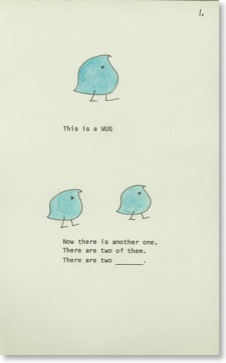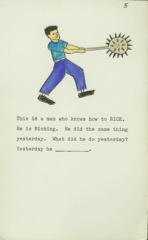
Inflectional Morphology: The study of inflectional morphology has played an important role in cognitive psychology ever since Jean Berko demonstrated that young children can inflect novel words in the well-known wug test. In this test, children are shown the picture of a single novel object and told that it is, say, a ‘wug’. They are then shown a picture of two such objects and prompted to name them ‘Here are two ????’. Berko showed that children are highly likely to pluralise the novel word by adding an `s'. This suggested that even 4 or 5 year-old children are able to identify subtle regularities in language and use them in a creative way. Language learning is not merely a question of imitating what you hear.

Symbols and Rules: About the same time, cognitive psychology was beginning to emerge as an important new approach to the study of the mind. Information theory had already had an important impact on theories of memory and attention. And the idea that the mind is an information processing system akin to a computer programme was beginning to take hold. In a neighbouring discipline, structural linguistics described language in terms of symbols (like nouns, adjectives, verbs and prepositions) manipulated by a set of rules, just like conventional computer programming languages. Cognitive psychologists were prepared to view information processing in the mind in terms of the same kind of vocabulary that linguists use: The mind is a symbol manipulation machine, operating according to a well-defined set of rules. The goal of the cognitive psychologist was to discover the operating system of the mind. The scientific work involved specifying the exact nature of the symbols and rules involved.


